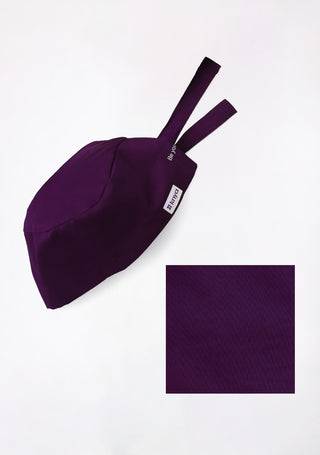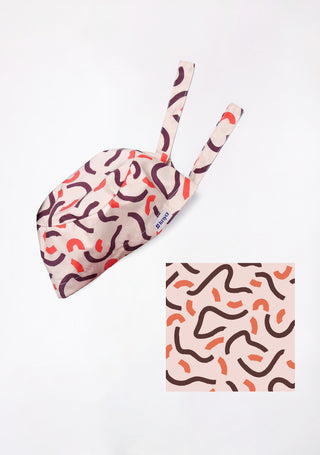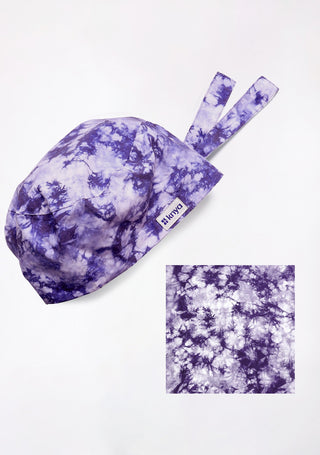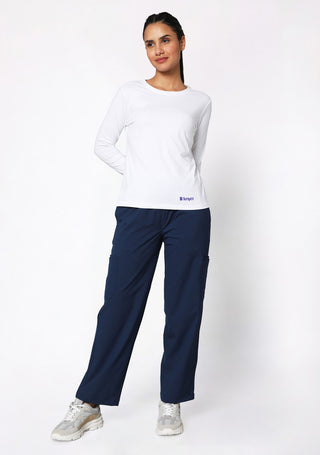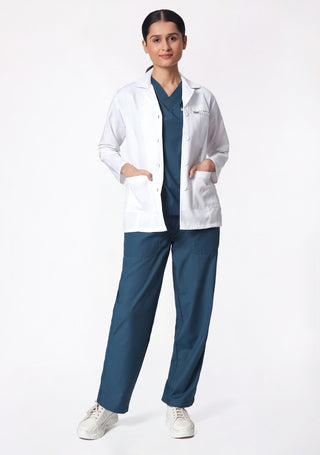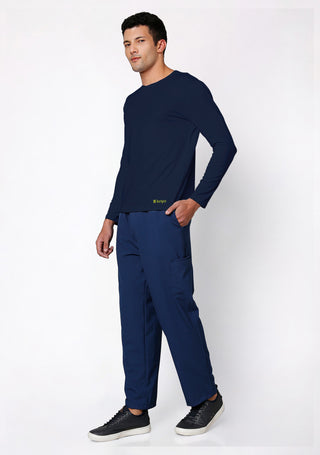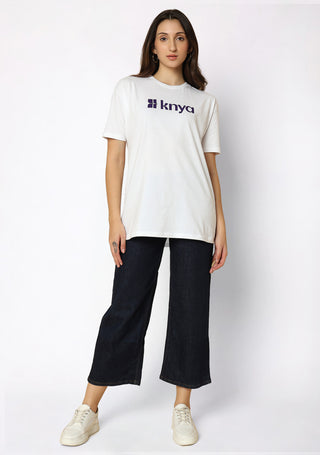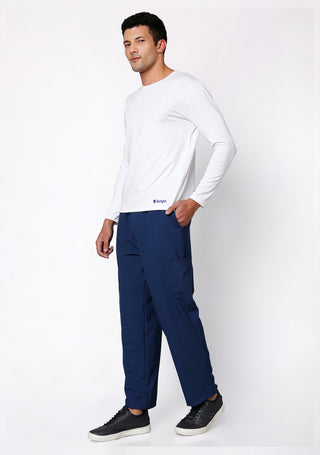In healthcare, professional dress is far more than a uniform — it is a tool for building trust, a source of self-confidence, and a visual expression of competence and compassion.Well-fitting, clean scrubs don't just look good; they speak volumes to patients who may be seeing nothing else familiar or reassuring in a stressful moment. They tell patients that their caregivers are prepared, capable, and attentive to details — all critical qualities for those entrusted with life and well-being.For healthcare professionals themselves, dressing professionally reinforces a sense of pride and purpose, subtly strengthening their ability to perform at their best.
The Power of First Impressions in Healthcare
Psychological studies repeatedly show that first impressions are formed within seconds, often before a single word is spoken. In a clinical setting, patients often arrive anxious, disoriented, and uncertain. At such times, visual cues become even more critical in helping them form a rapid judgment about the competence, reliability, and compassion of their caregivers.
Professional attire functions as a shortcut for credibility. Crisp, clean, and well-maintained scrubs signal that the healthcare professional is organized, attentive to detail, and respectful of their role and their patients. Conversely, wrinkled or stained clothing can unconsciously sow seeds of doubt, suggesting carelessness or fatigue — even if the professional is highly competent.
A well-dressed healthcare provider sets the stage for a more trusting and cooperative patient relationship. Trust, in turn, leads to better communication, increased adherence to treatment plans, and overall improved patient outcomes.
How Professional Dress Impacts Patient Perception
Patients rarely have the ability to assess the medical knowledge or technical skills of a doctor, nurse, or technician. Instead, they rely on external markers — appearance being one of the most immediate — to assess who is most competent to care for them.
Several research studies back up the strong connection between appearance and perceived competence:
- Formal white coats traditionally evoke authority and expertise. However, modern healthcare has shifted toward professional but comfortable scrubs, especially in specialties like emergency medicine and surgery, where functionality and hygiene are crucial.
-
Color psychology also plays a role. For instance, blue and green scrubs are calming and associated with cleanliness and healing. Bright, neon colors might be overwhelming, while dark colors could appear too somber.
-
Personal grooming — clean hands, neat hair, and tidy nails — combined with professional dress completes the image of a trustworthy caregiver.
Interestingly, studies suggest that patients prefer their providers to "look the part" according to the setting. In pediatrics, cheerful scrubs may be welcomed, while in critical care, more sober and professional attire reassures patients and families of seriousness and competence.
In short, appearance becomes a visual shorthand for professionalism, compassion, and capability — three pillars that patients instinctively seek.
For our male healthcare professionals, we offer a wide range of comfortable and stylish scrubs for men, designed to enhance both comfort and professional image
The Psychological Boost for Healthcare Professionals
It’s not just patients who are influenced by professional dress; healthcare workers themselves experience a psychological uplift when dressed well. This phenomenon is often called "enclothed cognition", the idea that clothing can systematically influence the wearer's psychological processes.
For healthcare workers, well-fitting, clean scrubs can:
-
Boost self-confidence: Knowing you look neat and professional can mentally prepare you to handle difficult conversations, complex procedures, and fast-paced environments.
-
Enhance focus and professionalism: Specific attire signals "work mode," helping professionals mentally separate personal and professional lives, which is crucial for emotional resilience.
-
Improve peer interactions: Within multidisciplinary teams, polished appearance can subtly enhance respect and cooperation.
-
Reduce anxiety: When you’re not worrying about looking sloppy, you can focus entirely on patient care.
Even small details — such as ensuring a proper fit, wearing comfortable but clean footwear, and selecting attire appropriate to the department — can cumulatively improve a healthcare professional's day-to-day mental state.
Cleanliness and Hygiene: More Than Just Appearance
In healthcare, appearance and hygiene are intrinsically linked. Professional dress isn’t solely about aesthetics; it’s about demonstrating a commitment to infection control, patient safety, and institutional standards.
- Patients are often acutely sensitive to signs of cleanliness. A stained lab coat or dirty scrubs can raise unconscious alarm bells about the provider's attention to hygiene protocols — even if the stain has an innocent explanation.
- Moreover, institutional policies often mandate regular laundering of uniforms, specific footwear rules, and personal grooming guidelines. These protocols are rooted not just in infection prevention, but also in preserving the patient's psychological sense of safety.
Thus, presenting oneself in clean, well-kept clothing is a dual expression of technical excellence and psychological reassurance.
Tired of stiff, uncomfortable scrubs? Order the best jogger scrubs here and experience the difference
Balancing Professionalism with Personal Expression
Modern healthcare systems increasingly acknowledge the importance of diversity and personal expression among their staff. Some settings allow personalized scrubs, colorful accessories, or even small badges or pins that reflect personal interests or values.
The key is balance: expressing individuality while upholding professionalism.
Small touches like a cheerful scrub cap, a badge reel with a favorite cartoon character, or colorful yet appropriate sneakers can humanize the professional without compromising the perception of competence.
Especially in pediatric wards or long-term care, a slightly personalized appearance can make healthcare providers more approachable and relatable. Patients appreciate seeing the "human side" of those who care for them.

